Artificial intelligence success stories often make the tech’s big breakthroughs feel out of reach for smaller teams.
AI as a service (AIaaS) levels the playing field by offering cloud-based capabilities without the need for costly engineers or equipment.
In this guide, you’ll learn how AIaaS works, the types of cloud platforms available and which products rule the market.
Then, explore some real AIaaS use cases for sales, marketing and business leaders, including product testing and customer data processing.
What is AI as a service (AIaaS)?
AI as a service refers to cloud-based artificial intelligence tools and capabilities delivered on a subscription or pay-as-you-use basis (e.g., a monthly pricing plan).
Instead of building costly AI systems from scratch, companies can access ready-to-use machine learning (ML) models, AI algorithms and infrastructure through third-party vendors.
Think of AIaaS as the AI equivalent of using a cloud CRM rather than buying an on-premise system or developing your own in-house. You get powerful tools and insights right away without spending big on specialist talent or hardware.
How AIaaS works
AIaaS solutions run on cloud infrastructure, with providers delivering them through user-friendly apps or application programming interfaces (APIs).
The process typically goes like this:
The vendor develops and maintains AI models and infrastructure in the cloud
You then subscribe to specific capabilities through a service agreement and access them through apps or integrate them into your existing tech via an API
The provider handles the technical complexity, model training and infrastructure needs, saving you the time and effort
For example, teams can plug into Amazon Comprehend’s pre-built natural language processing (NLP) via API. Part of Amazon Web Services (AWS), the system lets users analyze customer sentiment and key topics in emails or user surveys – no AI infrastructure or model training required.
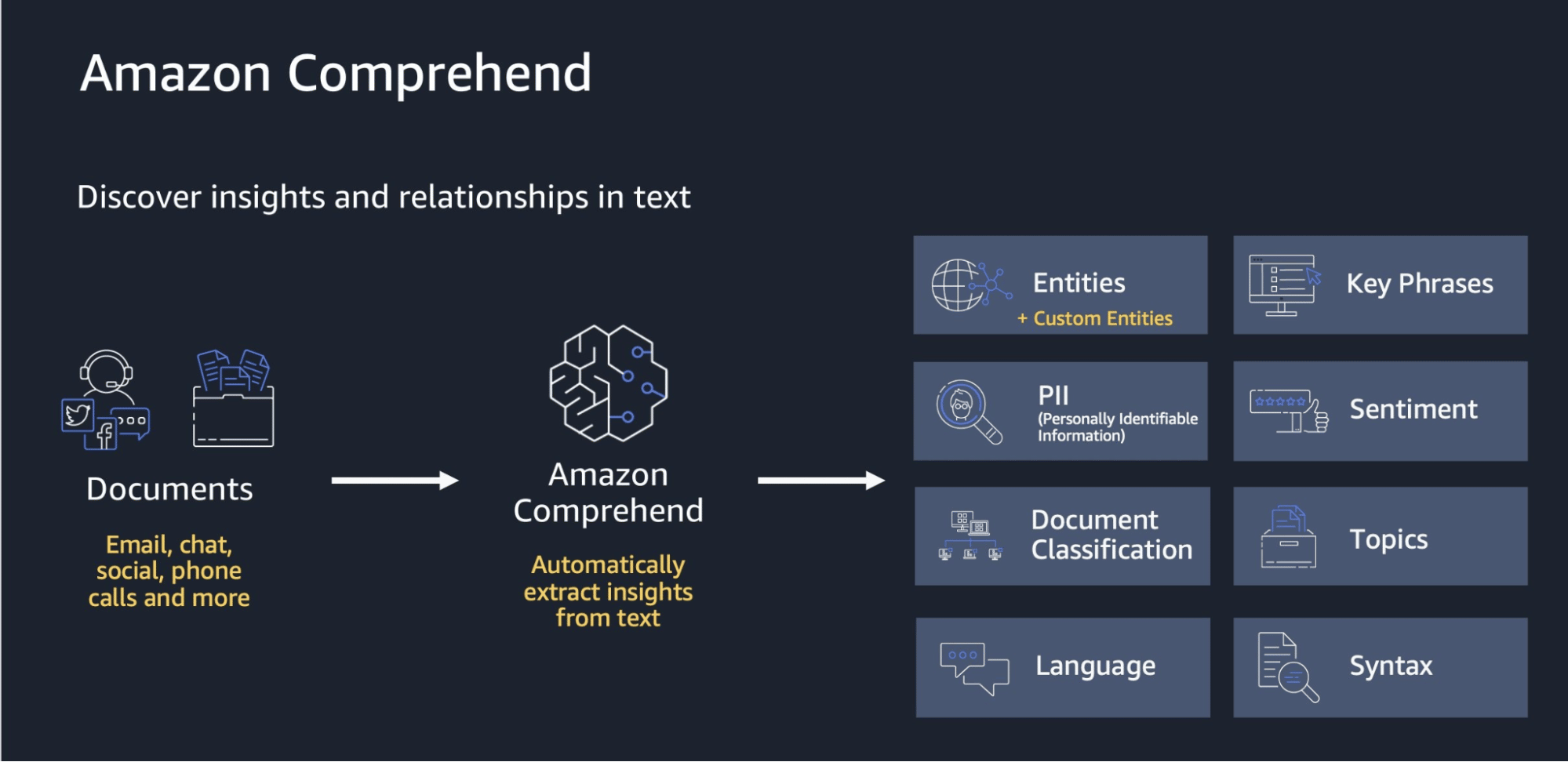
Other AIaaS apps handle tasks like image recognition, audio transcription, large-scale data analysis and automated customer service.
Note: AIaaS differs from traditional software (installed on local servers or computers) and regular software as a service (SaaS). While many SaaS products have AI features, they’re usually restricted to core use cases. Pure AIaaS offers more flexible, standalone AI services that you can customize and plug into other apps via APIs or low/no-code tools.
Types of AIaaS: tools, platforms and agents
There are three main types of AIaaS: AI tools as a service, AI platforms as a service and AI agents as a service.
Each type serves different needs and technical capabilities. Knowing the difference will help you choose wisely and get a better return on investment (ROI).
Here are your AIaaS options in more detail.
AI tools as a service
AI tools are ready-made applications with specific AI functionality, designed for immediate use with minimal setup and technical knowledge.
Examples include:
Content creation tools (e.g., generative AI apps like Jasper and ChatGPT)
Audio transcription services (e.g., Otter.ai, Fireflies.ai)
Image recognition platforms (e.g., Viso, Amazon Rekognition)
For instance, a small business might use Jasper’s AI Marketing Toolkit to develop and maintain its brand voice. That would help achieve consistent branding with fewer resources, freeing time and money for other activities.
Alternatively, a sales team could employ Fireflies.ai to quickly pull insights from recorded customer interviews and strengthen buyer personas in their customer relationship management (CRM) system.
AI platforms as a service
AI platforms provide environments for organizations to build and train bespoke AI models. They’re more customizable than AI business tools but require technical skill to use effectively.
Popular AI platforms as a service include:
For example, an e-commerce firm could use Vertex AI to build a custom forecasting model using historical sales data.
As the platform is delivered “as a service”, the team can tailor the AI to specific needs but rely on managed infrastructure – a far more flexible and cost-efficient approach than building from the ground up.
AI agents as a service
AI agents are autonomous systems that can handle complex tasks without human supervision (i.e., automation tools).
Many agents come with AI platforms or are integrated into SaaS products, helping teams automate repetitive tasks or laborious workflows.
AI agents (also known as agentic AI) include:
Sales agents that help reps manage leads and organize sales activities (like Pipedrive’s Sales Assistant – more on this later)
Research agents that gather market intelligence on autopilot (e.g., CB Insights, Perplexity AI)
Customer service agents that solve common issues and help optimize customer experiences (e.g., Sendbird AI, Sierra)
For example, Sales Assistant helps teams sell more by flagging engaged leads and recommending next steps, all based on past and real-time data.
Here’s what Pipedrive’s sales agent looks like when supporting a user in the Deals view:
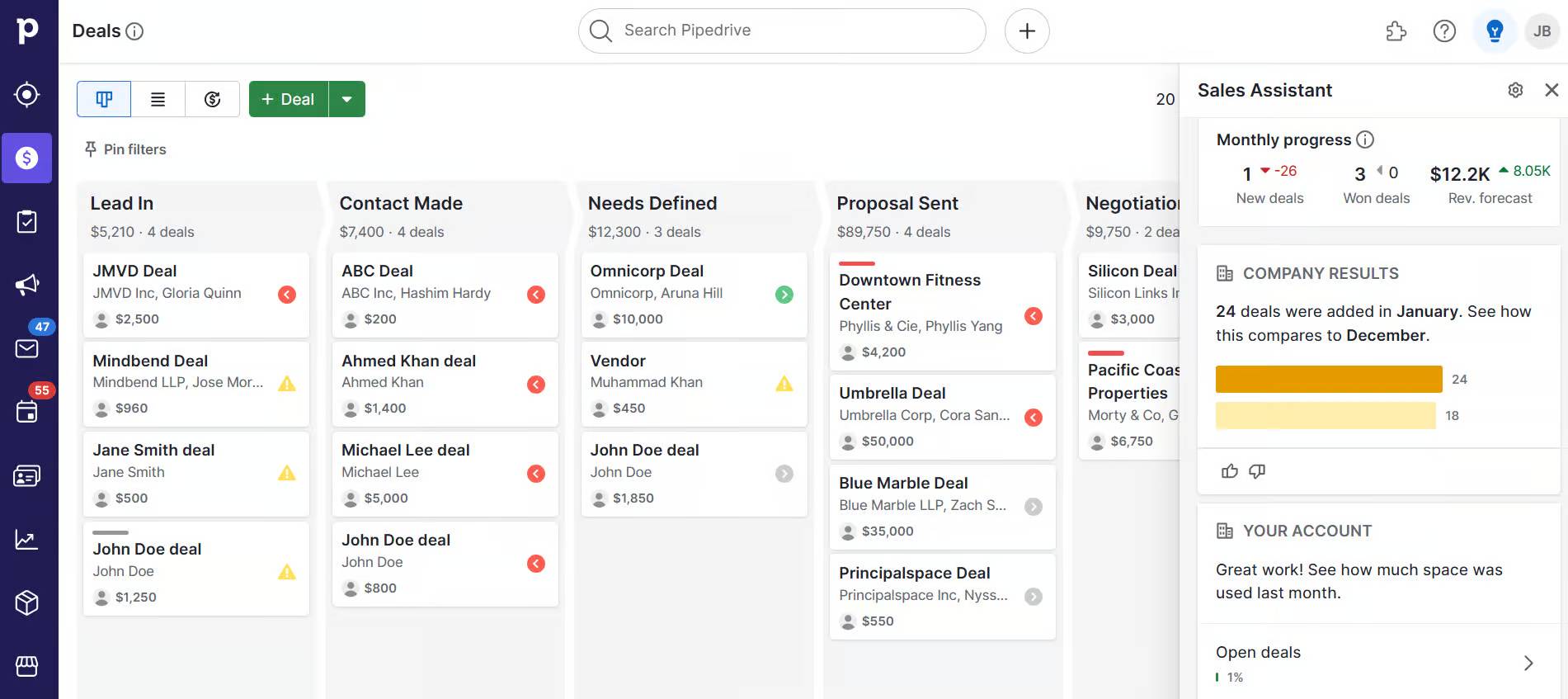
3 major benefits of AIaaS: how it helps your business
AI as a service makes powerful artificial intelligence available to businesses without needing specialist skills or significant investment. That’s valuable considering that 76% of respondents in Pipedrive’s 2024 State of Sales and Marketing report said AI could support their teams’ work.
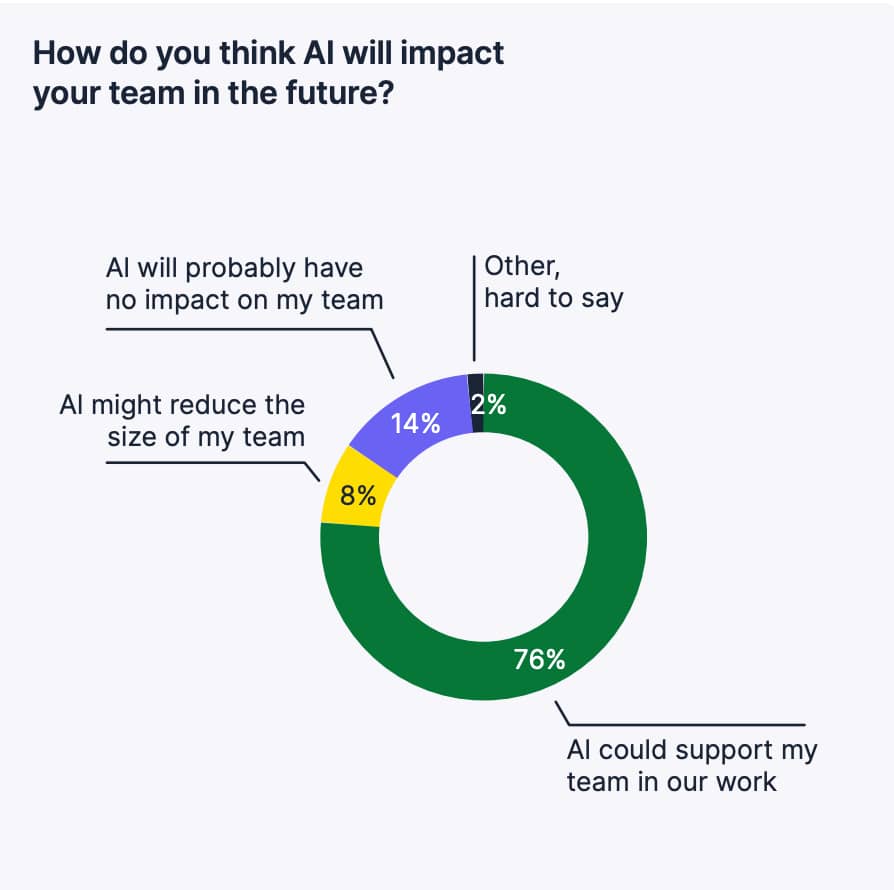
Here are the three top-selling points of AIaaS in more detail.
1. Access advanced AI technology without specialist expertise
AIaaS puts cutting-edge AI and machine learning models in the hands of regular business users. You don’t need to know about complex algorithms or data science to use them.
Accessibility is helpful as a “lack of knowledge” is the biggest AI adoption barrier, according to Pipedrive’s 2024 State of AI in Business report.
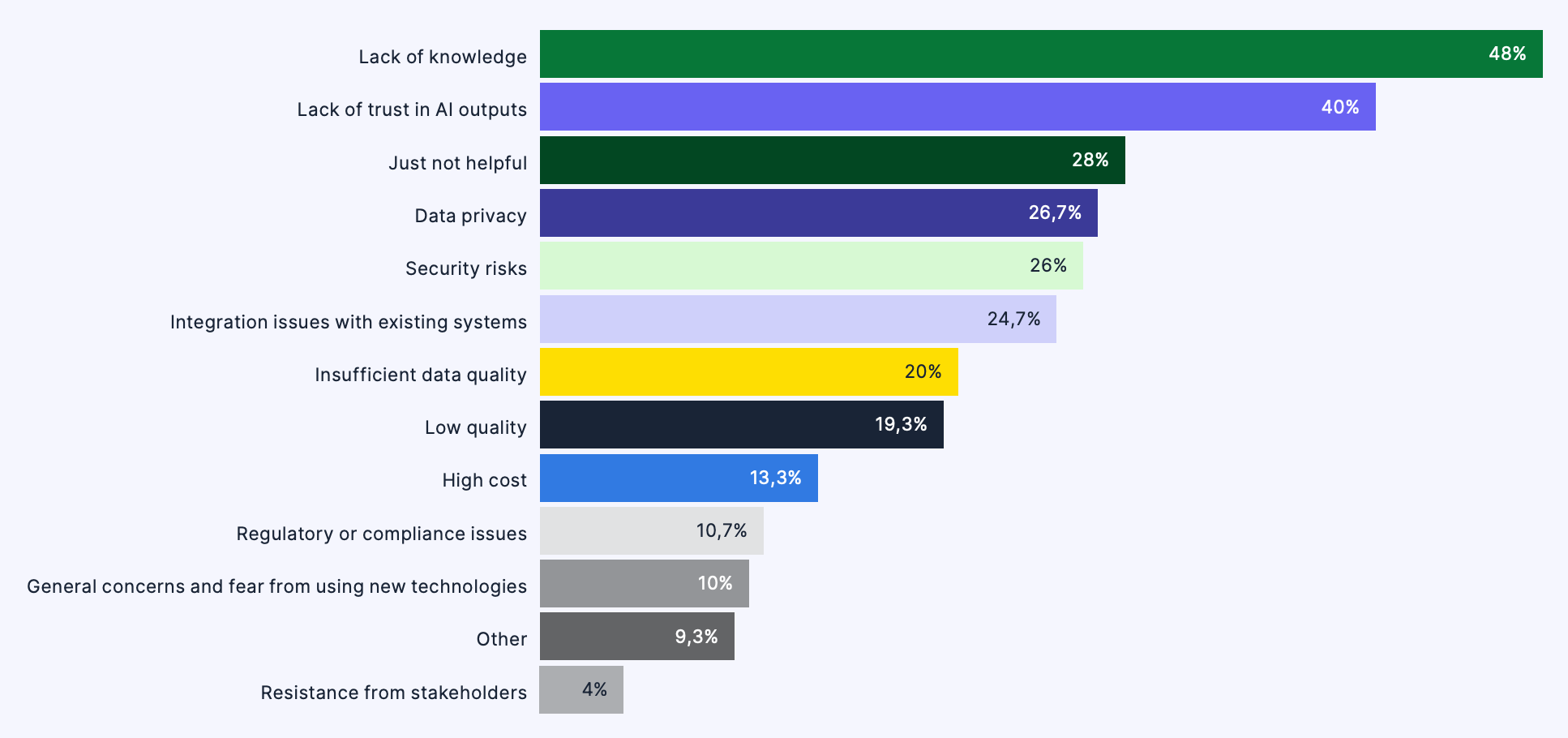
In small teams, AIaaS’s ease of use means non-technical marketers can analyze customer feedback and salespeople can forecast which leads will convert, all through user-friendly interfaces.
Ultimately, these pros get to focus on generating leads and selling (what they’re best at), rather than learning how to code or configure complex systems.
Note: Pipedrive’s AI report also found that 35% of businesses already use AI tools to make their work more efficient. Adoption is even higher among smaller companies, at 42%.
2. Save money and see results faster
Building your own AI systems costs a lot. You’d need to hire experts, buy expensive computers and manage all the tech. Most AIaaS products cut these costs with simple subscription or pay-as-you-go plans.
For example, advanced AI platforms typically charge based on the volume of data you process or the training your model requires, so you never spend on something you don’t use.
Here are some of Vertex AI’s processing and model training costs (at the time of writing):
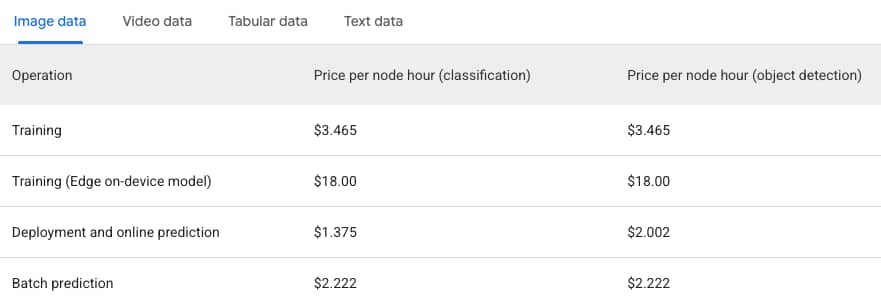
Simpler AI tools (and some agents) tend to offer tiered packages that you pay for periodically, like Jasper:
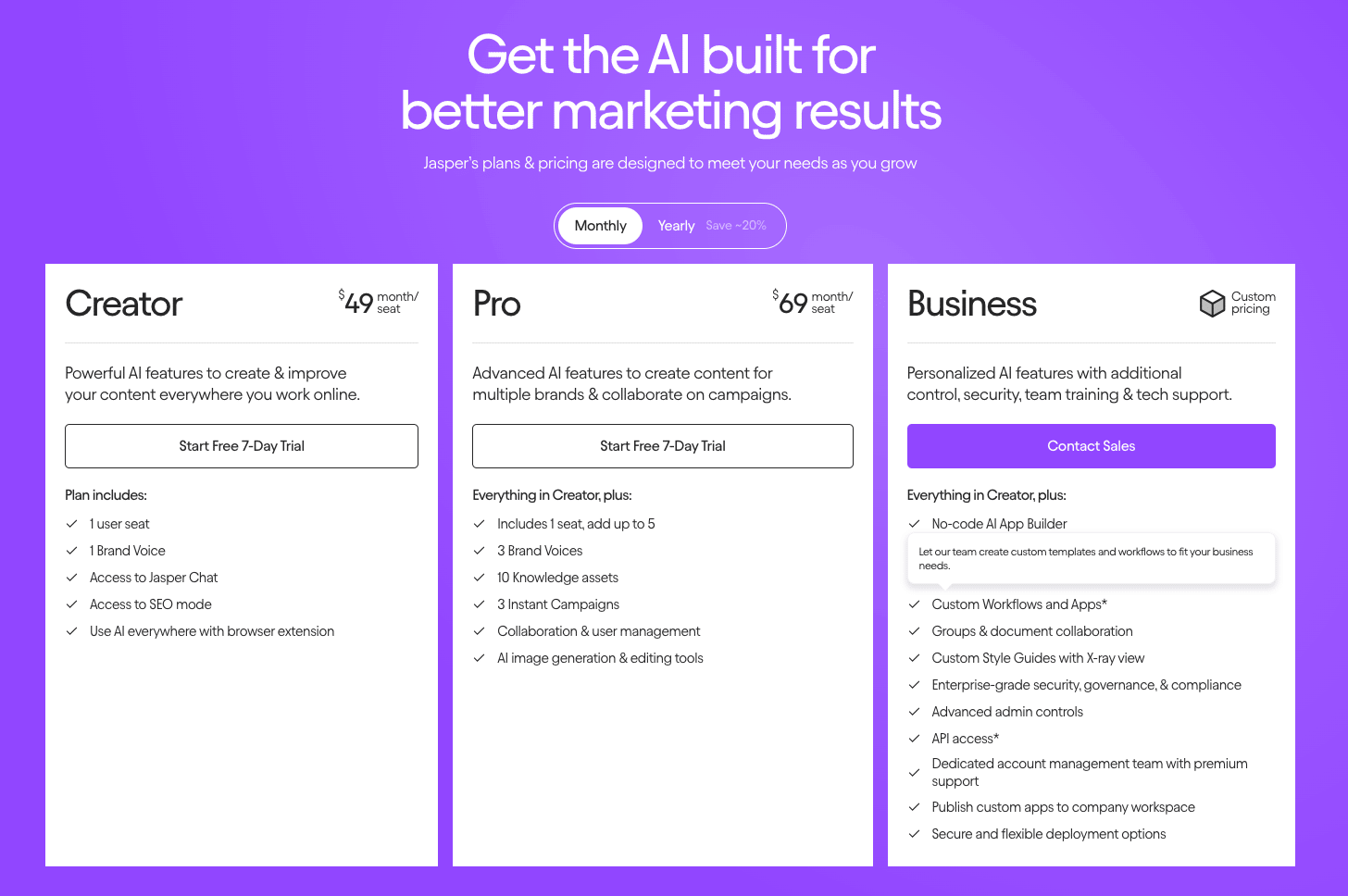
Both pricing models turn AI from a huge upfront expense into a manageable monthly or annual bill, making AI tools available even to startups and small businesses with tight budgets.
Beyond saving money, AIaaS delivers value faster.
While building custom AI can take months, AIaaS solutions are generally up and running in hours or days (depending on the type). Their pre-trained models let you see results quickly and streamline workloads using real data.
3. Grow your AI use as your business grows
Cloud-based AIaaS platforms let you adjust your AI resources based on changing needs. Scale up during busy seasons and down in slow periods without worrying about infrastructure.
The pricing models covered above aid this scalability.
Let’s say you’re on Jasper’s Pro plan with four employees, but need to expand your team. Switching to a Business package would unlock more seats and AI power.
AIaaS flexibility extends to trying different AI features. Rather than committing to one path, it lets you test various approaches to find what works best for your specific business.
For example, a SaaS company might use AIaaS to test customer churn prediction models.
During a product launch, it can scale up to analyze user behavior and spot at-risk accounts. Afterwards, it can scale down and keep the best model, helping it grow customer retention without wasting resources.
Drawbacks and limitations of AIaaS
AIaaS has its limits. Understanding the most common will help you set realistic expectations for your investment and choose the right tool.
With that in mind, here are the main downsides to consider:
Limited customization | Pre-built AI models may not perfectly fit unique business needs for specific training or industry knowledge. |
Data privacy concerns | Sharing sensitive customer information with outside AIaaS providers requires carefully checking their security practices and compliance with privacy laws. |
Potential vendor lock-in | Becoming too dependent on one provider’s system may make switching services difficult later. |
Less control over how it works | Organizations have limited visibility into how the AI models make decisions compared to systems they build themselves. |
Some setup challenges | While AIaaS reduces technical barriers, connecting these services with your existing business systems may require some technical know-how. |
To avoid these problems, carefully assess your needs and evaluate vendors against them before choosing.
For example, building a custom GPT in ChatGPT will do the trick if you just want to adapt marketing content to your email newsletter framework.
If you’re looking for end-to-end process automation, you’ll need a more sophisticated ML service like IBM Watson.
Choosing a service provider: 5 AIaaS offerings to consider
The AI-as-a-service market is complex. Some options prioritize ease of use for small business users. Others focus on raw power or customizability for AI developers.
Making an informed choice will determine your ROI. Here are the best AIaaS vendors at a glance so you can make quick comparisons:
Provider | Overview |
|---|---|
AWS AI Services |
|
Google Cloud AI |
|
Microsoft Azure AI |
|
IBM watsonx |
|
Pipedrive AI |
|
It’s clear that each AIaaS provider shines in different areas. The article will now dig deeper into each one to help you make a more informed investment.
1. AWS AI services
Amazon Web Services offers various flexible AI solutions, covering everything from basic automation capabilities to machine learning algorithms.
Its products support individual users, businesses of all sizes and even governments.
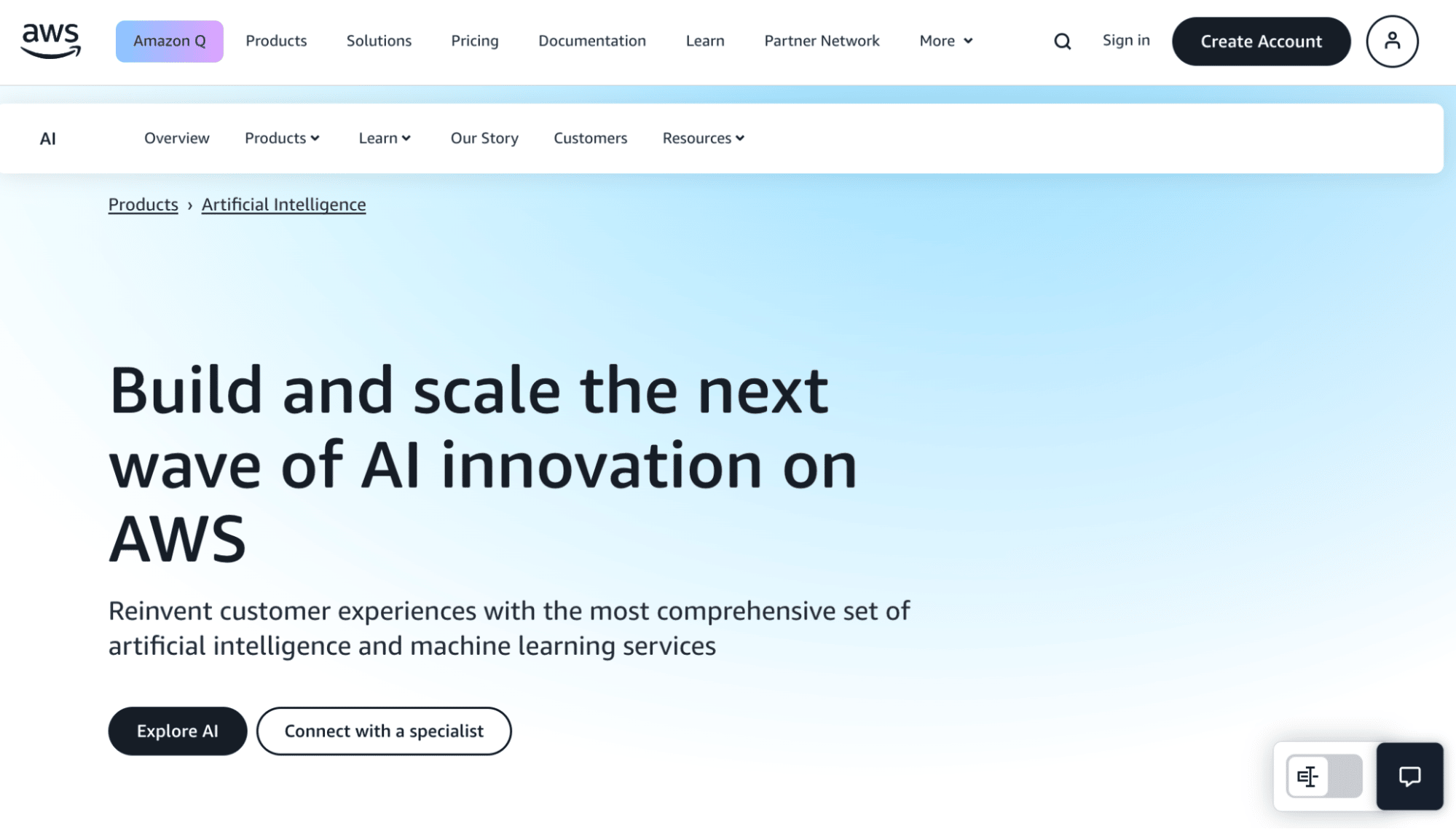
AWS AI strengths include detailed documentation, API support and easy integration with other tools within the brand’s ecosystem.
We’ve covered some specific AWS tools already (SageMaker and Comprehend), but others are:
Amazon Bedrock for building and scaling custom generative AI applications
Amazon Rekognition for image and video analysis, including facial recognition and object detection
Amazon Lex for building conversational interfaces like chatbots and voice assistants (using the same language model as Amazon’s Alexa virtual assistant)
Amazon Transcribe for automatic speech-to-text conversion (i.e., advanced speech recognition)
Amazon Polly for turning text into lifelike speech using deep learning technologies
AWS AI services work best for companies already working with Amazon’s cloud-computing system that need enterprise-level customer support.
2. Google Cloud AI
Google Cloud offers powerful AI services built on the same technology Google uses itself. Its AI platform excels at language processing, translation and image recognition.
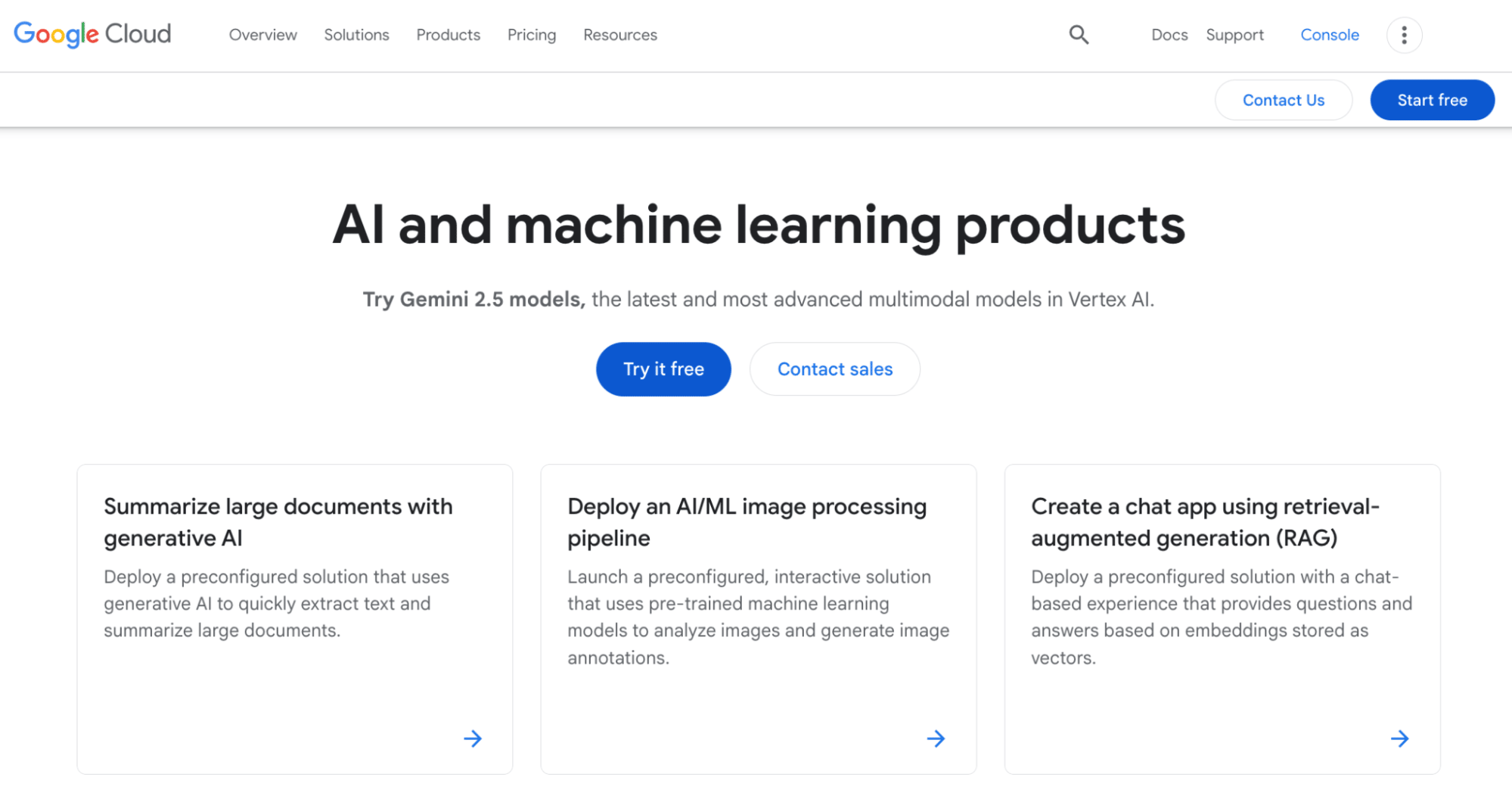
Notable Google Cloud AI services include:
Natural Language API for analyzing and understanding text
Vision AI for classifying images, detecting objects and extracting text
Dialogflow for building chatbots and voice apps
Google Cloud AI works particularly well for data-heavy applications requiring advanced analytics and organizations familiar with Google’s many other tools (e.g., Google Search Console or Google Workspace).
3. Microsoft Azure AI
Microsoft Azure offers a wide range of AI tools for business use, including pre-built models and custom machine learning capabilities.
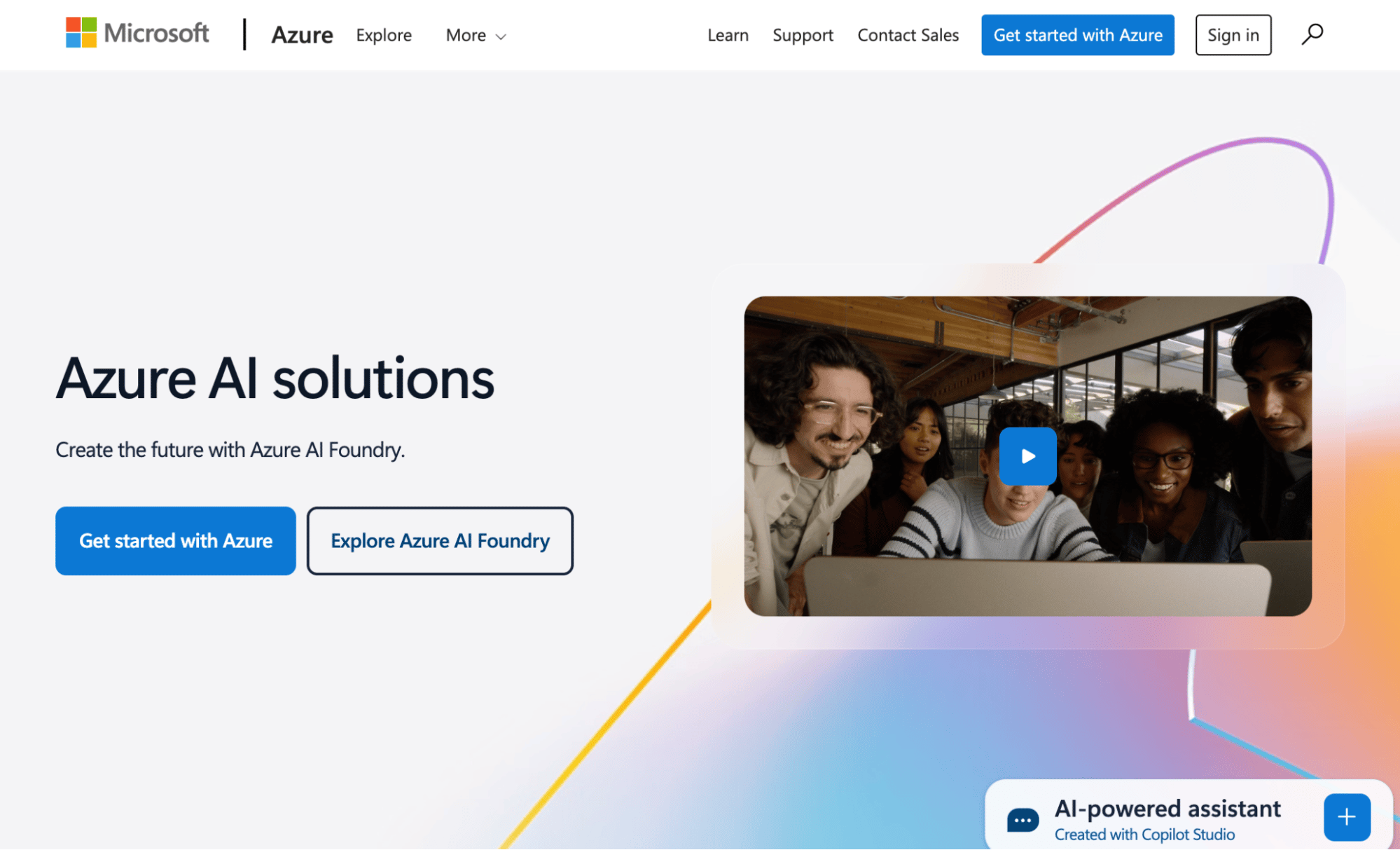
Azure’s services integrate well with staple Microsoft products like Office 365 and Dynamics, making it a good fit for businesses already using the Microsoft ecosystem.
The pros include strong security features, enterprise-grade support and access to powerful tools like OpenAI models through Azure OpenAI Service.
Popular Azure AI services include:
Azure Cognitive Services for vision, speech, language and decision-making tools
Azure Bot Service for building and managing chatbots
Azure Machine Learning for training and deploying ML models at scale
Azure AI works best for businesses needing reliable, scalable AI tools that fit into a Microsoft-heavy tech stack.
4. IBM watsonx
IBM watsonx is for enterprises that need powerful AI with strong governance, explainability and control – especially in tightly regulated industries like finance, healthcare and government.
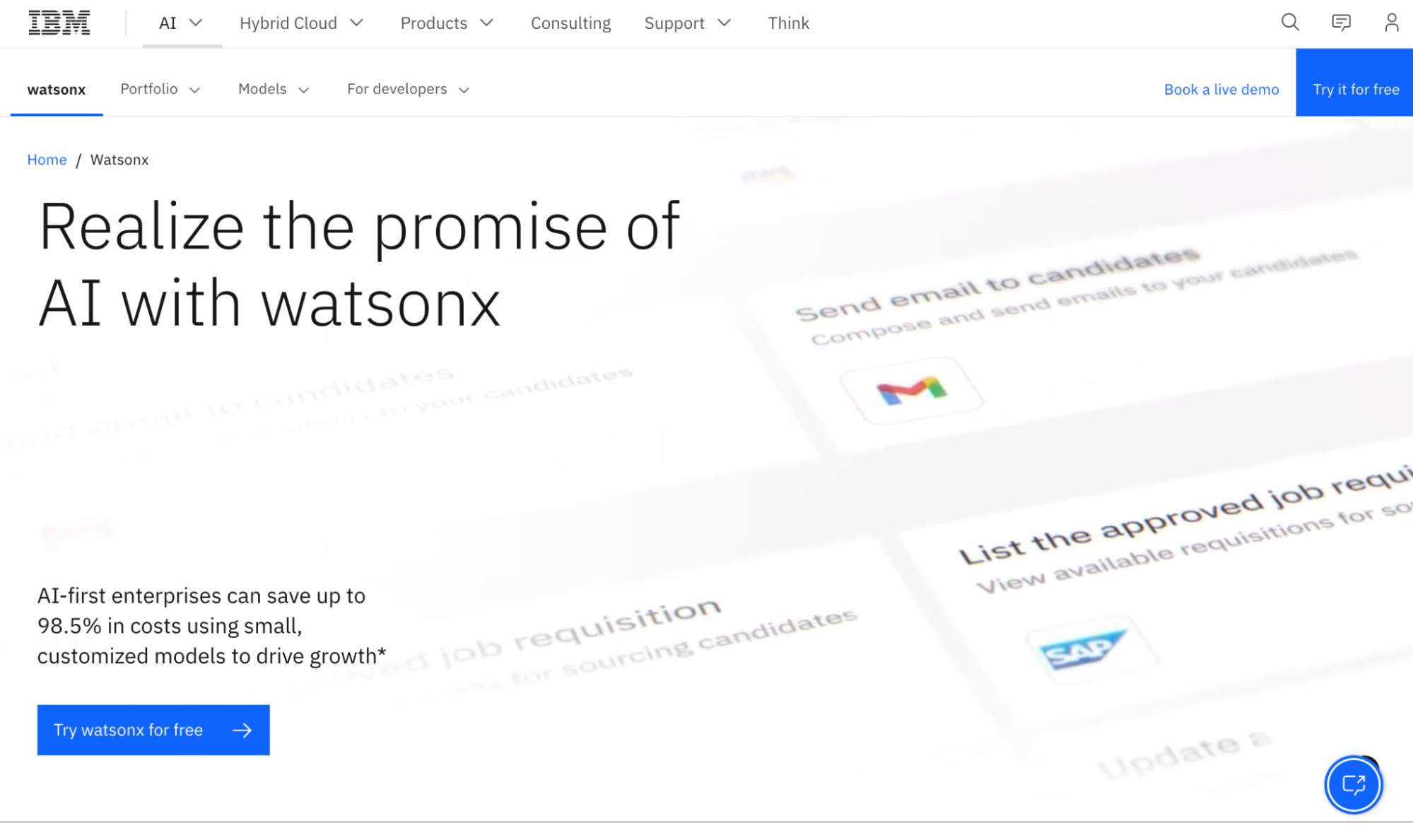
watsonx combines AI development, data management and model governance in one platform that includes:
watsonx.ai for building and tuning your own AI models
watsonx.data for querying and preparing trusted datasets
watsonx.governance for managing responsible AI use and compliance
IBM also continues to offer tools like Watson Assistant for chatbots and Watson Discovery for AI-powered search. These launched before the watsonx brand arrived in 2023 but remain integral to lots of IBM’s enterprise customers.
Together, these tools help companies build secure, customizable AI solutions ready for enterprise-scale deployment.
watsonx is best for large or regulated businesses that need end-to-end AI infrastructure with strict data and compliance controls.
5. Pipedrive AI – an AIaaS alternative for sales teams
Pipedrive’s built-in AI features help sales teams work smarter. Unlike conventional AIaaS providers, it focuses on sales-specific automation and decision-making insights.
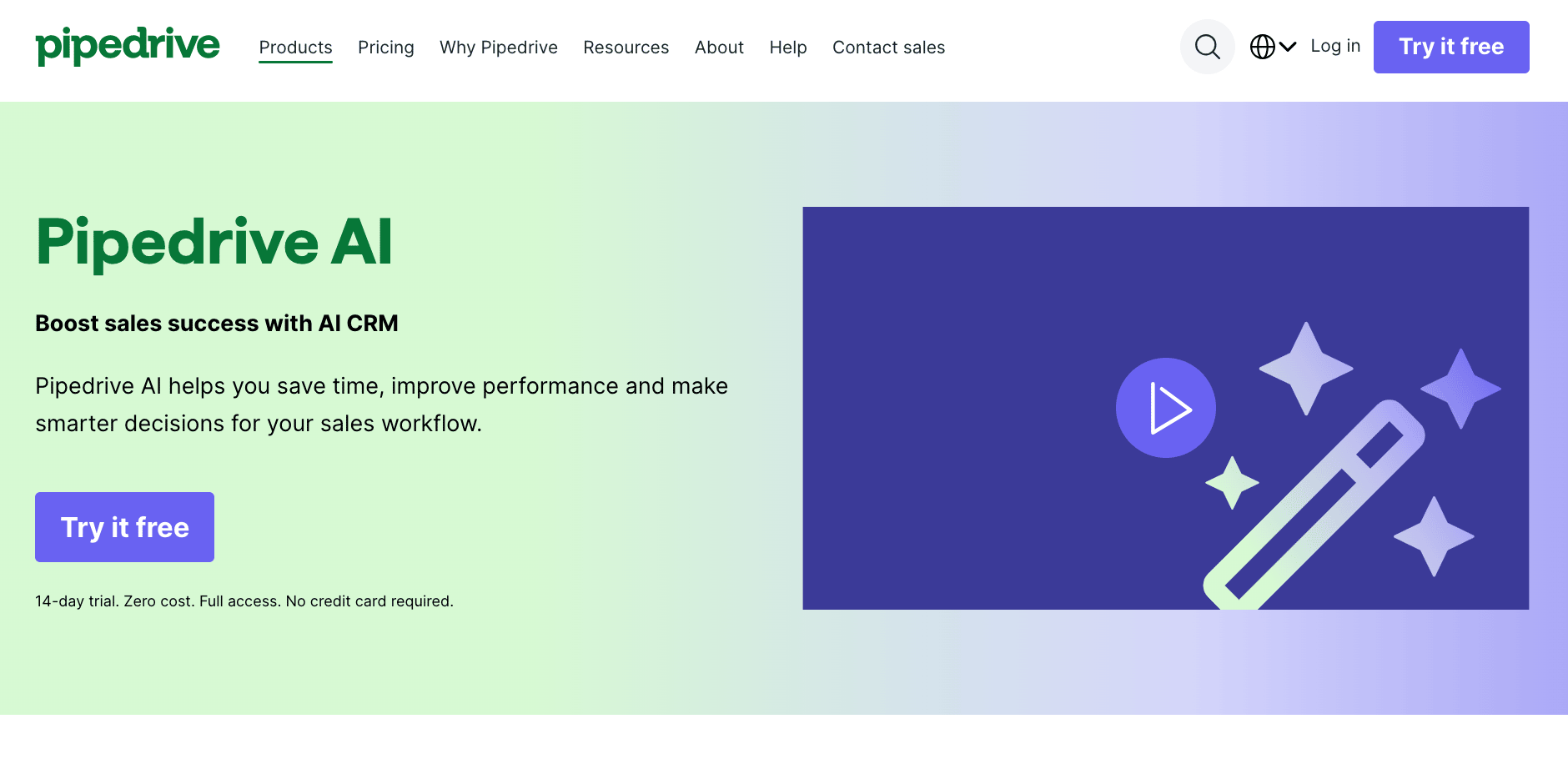
Pipedrive’s AI strengths include SMB-friendly ease of use, tight CRM integration and quick results with minimal setup.
It was even named the “easiest sales tool to implement” by G2Crowd and “easiest to use” by The Motley Fool.
Popular Pipedrive AI features include:
Sales Assistant for tips on how to prioritize activities and close deals based on historic and real-time sales data
Email AI for quickly crafting powerful sales and marketing messages, summarizing complex threads and analyzing customer sentiment and intent to buy
Pulse for AI-powered lead qualification and engagement scoring, enriched with public contact and company data to improve customer segmentation, ICP matching and outreach
Pipedrive AI is best for organizations that want practical, ready-to-go AI tools built into their sales and marketing workflows. It suits non-technical users looking to grow productivity fast without the help of data scientists.
Crush your manual admin with this sales automation guide
AI-as-a-service examples to inspire sales, marketing and business leaders
AIaaS isn’t just a concept; it’s already helping real teams work smarter.
Here are a few examples of how sales and marketing professionals use these tools to save time and improve services.
1. Lemvigh-Müller: scaling sales knowledge with smart recommendations and filtering (IBM Watson)
Problem: Danish wholesaler Lemvigh-Müller carries over 300,000 products, making it difficult for new sales reps to navigate its full catalog quickly.
Solution: The company used IBM Watson Explorer to create a searchable product database with AI-powered recommendations and filtering.
The platform connects to CRM and vendor data, helping reps find relevant products and suggest add-ons even based on vague customer queries.
Outcome: IBM Watson halved onboarding time, and sales teams can now resolve more queries on the first call. The transition to AIaaS improved both efficiency and client satisfaction.
Note: Watson Explorer predates IBM’s newer watsonx platform but remains in use by many enterprise teams.
2. Launchmetrics: faster prototyping and better brand insights (AWS)
Problem: Launchmetrics helps fashion and beauty brands measure marketing performance, but developing new AI tools in-house was time-consuming and resource-heavy. It needed a faster way to test and deploy features without building models from scratch.
Solution: Switching to Amazon Bedrock let the company access pre-trained foundation models and create synthetic datasets to support brands with limited digital presence.
Outcome: Delivering smarter, faster insights to more clients without the cost or complexity of building AI infrastructure reduced Launchmetrics’ prototyping time from five months to a few weeks.
3. OnlineSales.ai: improved performance and customer engagement (Google Cloud AI)
Problem: OnlineSales.ai supports e-commerce platforms with AI-powered retail media campaigns. However, as demand grew, slow query speeds and ad latency became real challenges.
Solution: By migrating to Google Cloud AI, the team enabled more responsive, real-time personalization at scale.
Outcome: With AIaaS handling the heavy lifting, OnlineSales.ai cut data processing times by over 60% and reduced ad server response delays by 30%. It now delivers smoother, smarter experiences for both retailers and their customers.
Final thoughts
As AI becomes critical to staying competitive, AIaaS is the most practical way forward for teams wanting to innovate fast and cost-effectively.
Some solutions are more sophisticated than others. However, investing shouldn’t be daunting, even for SMBs and compact teams.
The right tools are either easy to use out of the box or come with expert onboarding assistance (or both, if you choose Pipedrive).
Start small, focus on solving real business problems and scale what works. You’ll soon find yourself comfortably ahead of the AI curve.
Learn more about AI’s impacts on the sales and small business landscape in our detailed guide on how smaller companies are leading the AI revolution.







